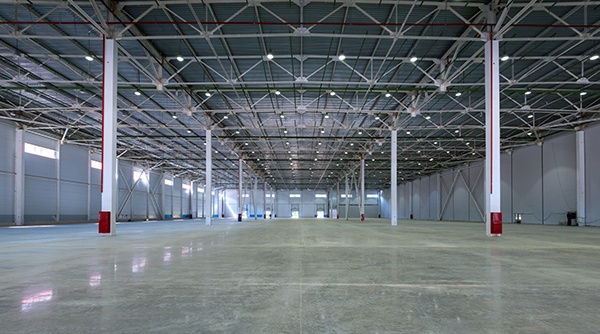
If you're used to leasing office space, industrial properties can be surprising. Instead of worrying about glass line, lunchtime amenities, and how many workspaces you can squeeze in a floor cored by elevators, you end up having to worry about aspects of the building that you probably never considered with office space. After all, it's safe to assume that any office space can power laptop computers, maintain 70(ish) degree temperatures and support people and furniture. In an industrial building, these and more factors are all important parts to consider.
Access
An industrial property only works if you can get people, goods and vehicles in and out of it. Look for a property that has appropriate proximity to road connections for trucks and rail spurs for incoming and outgoing goods. At the same time, you might also need to look for proximity to air or water shipping or, if you are operating a business that delivers into cities, for proximity to urban areas.
Capital Expenditures
While industrial buildings can be less expensive to build and rent than office buildings, capital expenditures can be very expensive. After all, a 300,000 square foot warehouse has a much larger roof to replace than a 300,000 square foot office building with 12 stories and a 25,000 square foot floorplate. With this in mind, carefully review your lease to see how much responsibility, if any, you have to share in the cost of capital repairs like new roofs or HVAC unit replacements.
Ceiling Height
While you rent warehouses and similar properties on a per-square-foot basis, the space's actual storage capacity is based on its cubic footage. You might not be able to stack office workers, but given the right racks, a taller ceiling means that you can stack more SKUs, boxes or pallets. Conversely, if you don't need to stack items high, a taller and more expensive building could leave you with wasted space and wasted rent dollars.
Column and Door Spacing
If your racks are 8 feet wide and columns are spaced 30 feet apart, your company will end up wasting space on either side of each column. The location and type of loading and dock doors can also impact how efficiently a space works for you. If you aren't experienced in analyzing how these factors impact your space's efficiency, consider working with an industrial space planner that can help map out how the building will interact with your needs.
Floor Loading
While computers, desks and workers don't put a lot of stress on floors, heavy equipment and 40-plus foot tall racks do. Furthermore, if a space's floor is not adequately flat and smooth, it could end up being unsuitable. Imagine a 40-foot rack on a tilted floor -- you'd end up with the Leaning Tower of Products!
As such, it's important to pay careful condition to the design, engineering and condition of the slab under your space. If the floor can't handle your needs, the space is wrong for you.
Energy and Electricity
Energy efficiency concerns in industrial spaces are similar to those in offices, but you should also confirm that your space has enough power to suit your needs. Even if warehouses don't have this issue, industrial space intended to house heavy machinery must have connections of adequate type and voltage to work.
Heating, Ventilation and Air Conditioning
Not every industrial space has HVAC to maintain a 70 degree temperature all of the time. If you don't need constant comfort, an unheated (or partially heated) space can be perfect, but if you do, a space without HVAC is not a good fit.
Enjoyed this article? Here are a few other industrial articles:
5 Secrets of Industrial Site Selection
Successfully Leasing Commercial Warehouse Space
Four Tips for Maximizing Your Industrial Utilization








